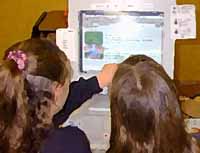|
|
 |
Each student becomes an expert on her or his subject and is ultimately expected to convert the expertise into an authentic product. |
Stages . . .
| 1. Selection | Each student settles on one field of interest and identifies one particular aspect worthy of tracking. |
| 2. Questioning | Rather than gathering all information regarding the subject, the student will form key questions so that only pertinent information is retained. |
| 3. Storage | This is an opportunity to design an efficient information storage and retrieval system so that the student can sort, sift and interpret even after collecting hundreds of records. |
| 4. Prospecting | Early in the project, the student surveys the information landscape and identifies all relevant, reliable sites. If possible, the student sets up an automated flow (push technology). |
| 5. Monitoring sites & expanding resources | The student keeps an eye on daily and weekly developments, periodically visiting sites which have no "alert" capability. The student frequently updates sources as new ones emerge or old ones fold. |
| 6. Responding to inquiries | The student has a chance to demonstrate expertise by responding to questions from peers and others either personally or through e-mail. |
| 7. Creating a product | The student shares insight by developing a product of some kind related to the subject. The product should require original thought, data compression and synthesis. |
Credits: The drawings, photographs and graphics are by Jamie McKenzie.
© 2006, Jamie McKenzie, all rights reserved.
Copyright Policy: These pages may not be duplicated, distributed, redistributed or republished in any manner without express permission.